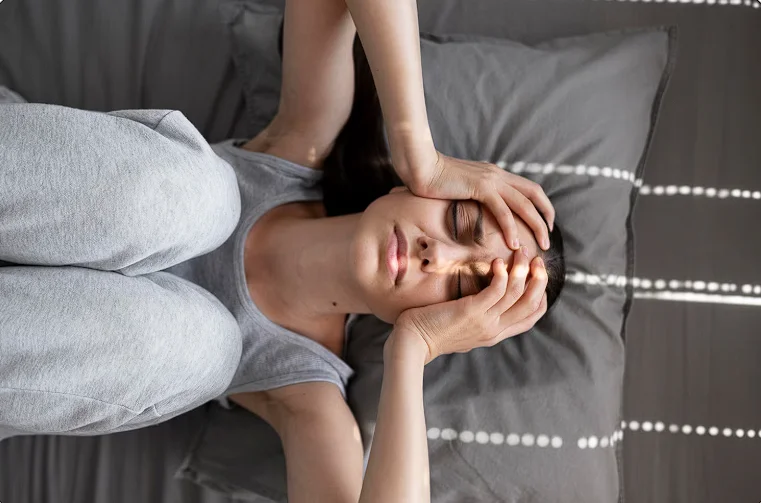Anxiety disorders affect millions of people worldwide, leading to significant emotional and physical distress. Among the most common anxiety disorders are panic disorder and generalized anxiety disorder (GAD), both of which can disrupt daily life. While these two conditions share some similarities, they are distinct in terms of symptoms, triggers, and treatment options.
In this article, we will explore the differences between panic disorder vs generalized anxiety, provide an overview of treatment options for each, and highlight the role of Transcranial Magnetic Stimulation (TMS) therapy in managing these conditions.
Understanding Anxiety Disorders
Anxiety disorders are among the most prevalent mental health conditions globally, affecting individuals of all ages. These disorders can cause intense feelings of worry, fear, and apprehension, and they often interfere with daily activities and quality of life. Panic disorder vs generalized anxiety disorder represent two specific types of anxiety disorders that can manifest in different ways.
Panic disorder involves sudden, intense episodes of fear or discomfort, known as panic attacks, which can occur unexpectedly. Generalized anxiety disorder (GAD), on the other hand, is characterized by chronic, excessive worry about various life events, even when there is little or no reason for concern. While both conditions are anxiety-related, their symptoms, triggers, and treatment methods differ significantly.
What is Panic Disorder?
Panic disorder is a type of anxiety disorder characterized by recurrent and unexpected panic attacks. These attacks are intense periods of fear or discomfort that typically reach their peak within minutes and are accompanied by physical symptoms such as a racing heart, sweating, chest pain, dizziness, or difficulty breathing.
Panic attacks can occur suddenly and without warning, often leaving individuals feeling out of control or frightened of having another attack. As a result, people with panic disorder may avoid situations or places where they previously experienced an attack, which can further limit their daily activities and social interactions.

What is Generalized Anxiety Disorder (GAD)?
Generalized anxiety disorder (GAD) is another form of anxiety that is marked by persistent and excessive worry. Individuals with GAD find it difficult to control their worry, and their anxiety can be triggered by a wide range of issues, from work or family responsibilities to health concerns or even minor everyday matters. Unlike panic disorder, GAD involves ongoing anxiety rather than sudden, intense attacks.
The symptoms of GAD include chronic restlessness, difficulty concentrating, irritability, muscle tension, and sleep disturbances. Unlike panic attacks, which are short-lived, the anxiety in GAD is more persistent, often lasting for six months or more, and it can interfere with work, social activities, and personal well-being.
Panic Disorder vs Generalized Anxiety: Key Differences
While panic disorder vs generalized anxiety disorder share the common feature of anxiety, they differ significantly in how they manifest. Below, we compare the symptoms, duration, intensity, and causes of each condition.
Symptoms Comparison
- Panic Disorder: Panic attacks are the hallmark symptom of panic disorder, characterized by sudden and intense fear, accompanied by physical symptoms such as heart palpitations, sweating, trembling, shortness of breath, and chest pain.
- Generalized Anxiety Disorder (GAD): GAD involves constant worry and anxiety about a range of issues. Common symptoms include restlessness, muscle tension, difficulty concentrating, irritability, and trouble sleeping. Unlike panic attacks, the anxiety in GAD is more chronic and generalized.
Duration and Intensity of Symptoms
- Panic Disorder: Panic attacks are typically brief but intense, often lasting only 5-30 minutes. However, the fear of having another attack can cause ongoing anxiety.
- Generalized Anxiety Disorder (GAD): GAD is marked by long-term, chronic anxiety that persists for at least six months or longer, making it more enduring than panic disorder.
Triggers and Causes
- Panic Disorder: Panic attacks can occur without any clear trigger, leading to significant fear and avoidance of situations where previous attacks occurred. Stress and certain phobias can also act as triggers.
- Generalized Anxiety Disorder (GAD): GAD is often triggered by everyday worries and stressors, such as job pressure, health concerns, and family responsibilities. It tends to be less situation-specific than panic disorder.
Treatment Options for Panic Disorder
Cognitive Behavioral Therapy (CBT) for Panic Disorder
Cognitive Behavioral Therapy (CBT) is a widely used and effective treatment for panic disorder vs generalized anxiety. CBT helps individuals identify and challenge irrational thoughts and beliefs that contribute to their anxiety. In the case of panic disorder, CBT focuses on addressing the fear of panic attacks and teaching individuals how to manage the physical symptoms of anxiety.
Therapists use CBT techniques to help patients confront their fears gradually and learn relaxation strategies to cope with the physical symptoms of panic attacks, such as deep breathing exercises or progressive muscle relaxation.
Medications for Panic Disorder
Medications are commonly prescribed to manage the symptoms of panic disorder. Antidepressants, such as selective serotonin reuptake inhibitors (SSRIs), and benzodiazepines are often used to reduce anxiety and prevent panic attacks. Medication may be used in conjunction with therapy for more effective management of symptoms.
Transcranial Magnetic Stimulation (TMS) for Panic Disorder
TMS for panic disorder is an emerging treatment option for individuals who do not respond to traditional therapies. TMS involves using magnetic pulses to stimulate specific areas of the brain that are associated with mood regulation and anxiety. Studies have shown that TMS can be an effective treatment for panic disorder, particularly for those with treatment-resistant symptoms. It is non-invasive and has relatively few side effects.
Lifestyle Changes and Coping Strategies
In addition to therapy and medication, making certain lifestyle changes can help manage panic disorder. Regular physical activity, a healthy diet, sufficient sleep, and stress management techniques can all contribute to reducing the frequency and intensity of panic attacks.
Treatment Options for Generalized Anxiety Disorder
Cognitive Behavioral Therapy (CBT) for GAD
CBT is also an effective treatment for generalized anxiety disorder vs panic disorder. In GAD, CBT focuses on addressing the excessive worry and anxiety that individuals experience daily. It helps individuals recognize and challenge irrational thoughts while teaching them how to manage anxiety with healthy coping mechanisms.
Medications for Generalized Anxiety Disorder
SSRIs, benzodiazepines, and other anti-anxiety medications are commonly prescribed to help individuals manage the chronic symptoms of GAD. These medications can reduce worry, muscle tension, and other physical symptoms associated with anxiety.
Transcranial Magnetic Stimulation (TMS) for Generalized Anxiety Disorder
Just as TMS for panic disorder is effective, TMS has also shown promise in treating GAD. By targeting areas of the brain that regulate mood and anxiety, TMS can help individuals with GAD achieve long-term relief from chronic anxiety symptoms.
Mindfulness and Relaxation Techniques
Mindfulness-based techniques, such as meditation, deep breathing exercises, and progressive muscle relaxation, are also helpful for managing GAD. These techniques promote relaxation, reduce stress, and help individuals focus on the present moment rather than worrying about future events.

Comparing Treatment Outcomes: Panic Disorder vs Generalized Anxiety Disorder
Treatment Effectiveness for Panic Disorder
CBT, medications, and TMS have been shown to be highly effective in treating panic disorder. With proper treatment, many individuals experience a significant reduction in the frequency and intensity of panic attacks. Long-term management strategies, including lifestyle changes and relaxation techniques, can help prevent relapse.
Treatment Effectiveness for Generalized Anxiety Disorder
CBT and medications are the most common treatment options for GAD. Many individuals find that therapy and medication combined are effective in managing their chronic anxiety. TMS may also be beneficial for those with GAD who have not responded to traditional treatments.
The Role of TMS in Both Conditions
TMS and generalized anxiety have been found to work well in treating both panic disorder and GAD, particularly for individuals who have not experienced relief from other therapies. TMS offers a non-invasive, drug-free treatment option that targets the brain’s anxiety-regulating areas, leading to long-term improvements.
Conclusion: Finding the Right Treatment for Your Anxiety
Suppose you’re experiencing symptoms of panic disorder vs generalized anxiety disorder. In that case, it’s important to consult with a mental health professional who can help determine the most appropriate treatment for your condition.
Whether it’s CBT, medication, TMS therapy, or a combination of approaches, personalized treatment plans can improve outcomes and help individuals manage their anxiety. By taking proactive steps, you can regain control of your mental health and lead a more balanced, fulfilling life.
